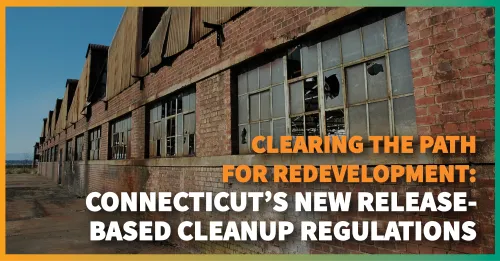Recent Articles
 Oct27HRP Associates Adds Staff in FarmingtonLocal environmental engineering firm hir...See Details
Oct27HRP Associates Adds Staff in FarmingtonLocal environmental engineering firm hir...See Details Oct13HRP Associates Adds Staff in Farmington Local environmental engineering firm hir...See Details
Oct13HRP Associates Adds Staff in Farmington Local environmental engineering firm hir...See Details Oct13Clearing the Path for Redevelopment: Connecticut’s New Release-Based Cleanup RegulationsConnecticut’s new Release-Based Cleanu...See Details
Oct13Clearing the Path for Redevelopment: Connecticut’s New Release-Based Cleanup RegulationsConnecticut’s new Release-Based Cleanu...See Details Sep23HRP Associates Adds Staff in Clifton ParkLocal environmental engineering firm hir...See Details
Sep23HRP Associates Adds Staff in Clifton ParkLocal environmental engineering firm hir...See Details Sep23HRP Associates Adds Staff in GreenvilleLocal environmental engineering firm hir...See Details
Sep23HRP Associates Adds Staff in GreenvilleLocal environmental engineering firm hir...See Details Sep23HRP Associates Adds Staff in FarmingtonLocal environmental engineering firm hir...See Details
Sep23HRP Associates Adds Staff in FarmingtonLocal environmental engineering firm hir...See Details Sep15HRP Associates Adds Staff in FarmingtonLocal environmental engineering firm hir...See Details
Sep15HRP Associates Adds Staff in FarmingtonLocal environmental engineering firm hir...See Details Aug25A Dance Party in a Bucket: The Origins of Enviro-BAC and Where It’s GoingDepending on who you ask, the story of E...See Details
Aug25A Dance Party in a Bucket: The Origins of Enviro-BAC and Where It’s GoingDepending on who you ask, the story of E...See Details Aug20HRP Associates Adds Staff in Clifton ParkLocal environmental engineering firm hir...See Details
Aug20HRP Associates Adds Staff in Clifton ParkLocal environmental engineering firm hir...See Details Aug19HRP Associates Adds Staff in FarmingtonLocal environmental engineering firm hir...See Details
Aug19HRP Associates Adds Staff in FarmingtonLocal environmental engineering firm hir...See Details Aug19HRP Associates Adds Staff in Clifton ParkLocal environmental engineering firm hir...See Details
Aug19HRP Associates Adds Staff in Clifton ParkLocal environmental engineering firm hir...See Details Jul31HRP Associates Adds Staff in Plymouth Local environmental engineering firm hir...See Details
Jul31HRP Associates Adds Staff in Plymouth Local environmental engineering firm hir...See Details Jul31HRP Associates Adds Staff in FarmingtonLocal environmental engineering firm hir...See Details
Jul31HRP Associates Adds Staff in FarmingtonLocal environmental engineering firm hir...See Details Jun19HRP Associates Adds Staff in FarmingtonLocal environmental engineering firm hir...See Details
Jun19HRP Associates Adds Staff in FarmingtonLocal environmental engineering firm hir...See Details Jun19HRP Associates Adds Staff in PlymouthLocal environmental engineering firm hir...See Details
Jun19HRP Associates Adds Staff in PlymouthLocal environmental engineering firm hir...See Details Jun18HRP Associates Adds Staff in FarmingtonLocal environmental engineering firm hir...See Details
Jun18HRP Associates Adds Staff in FarmingtonLocal environmental engineering firm hir...See Details



